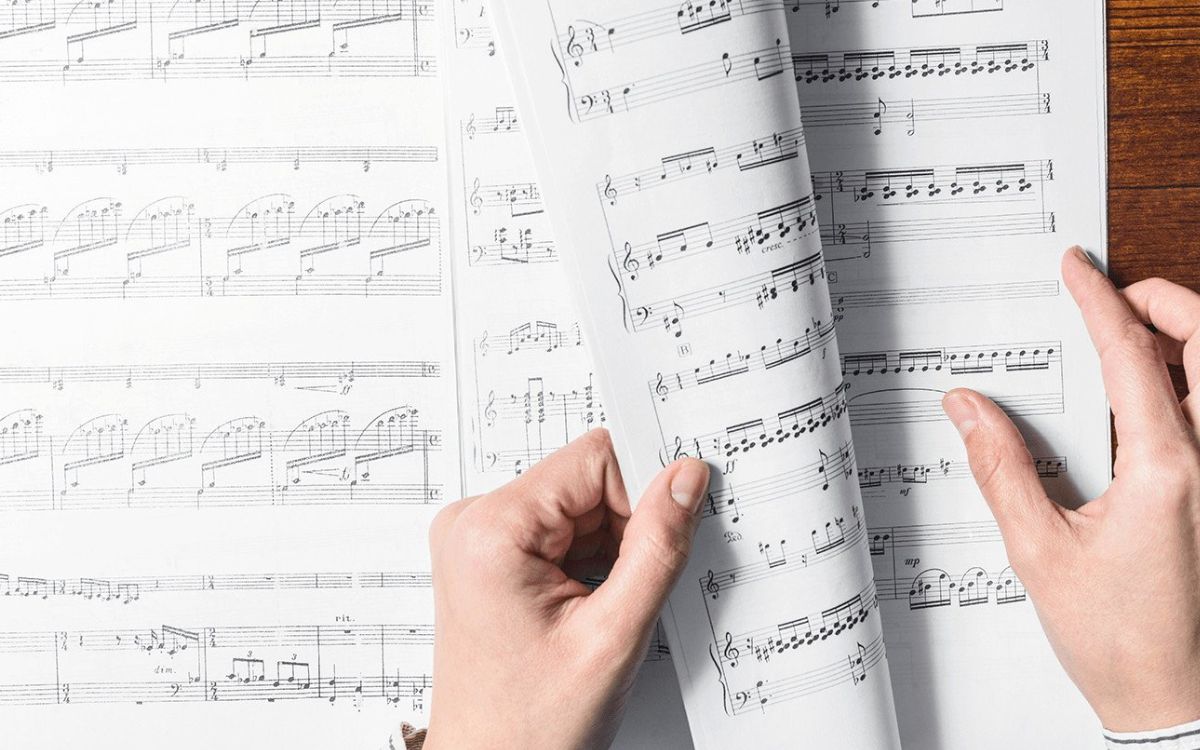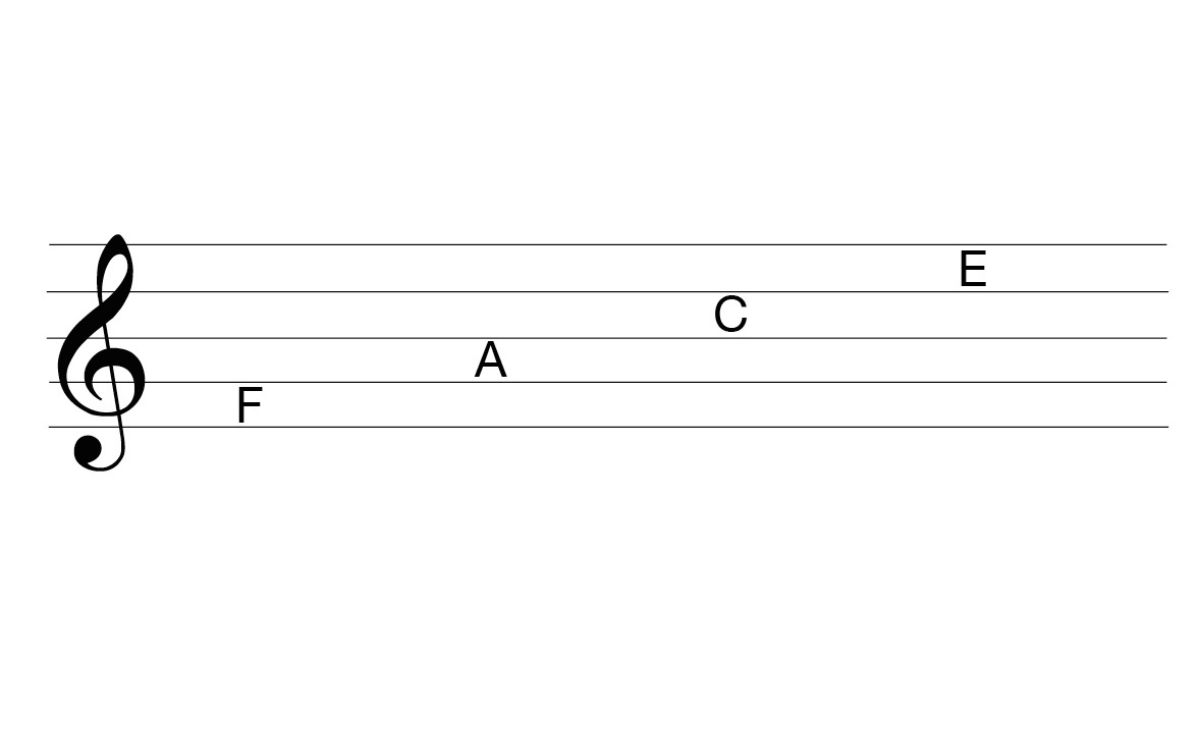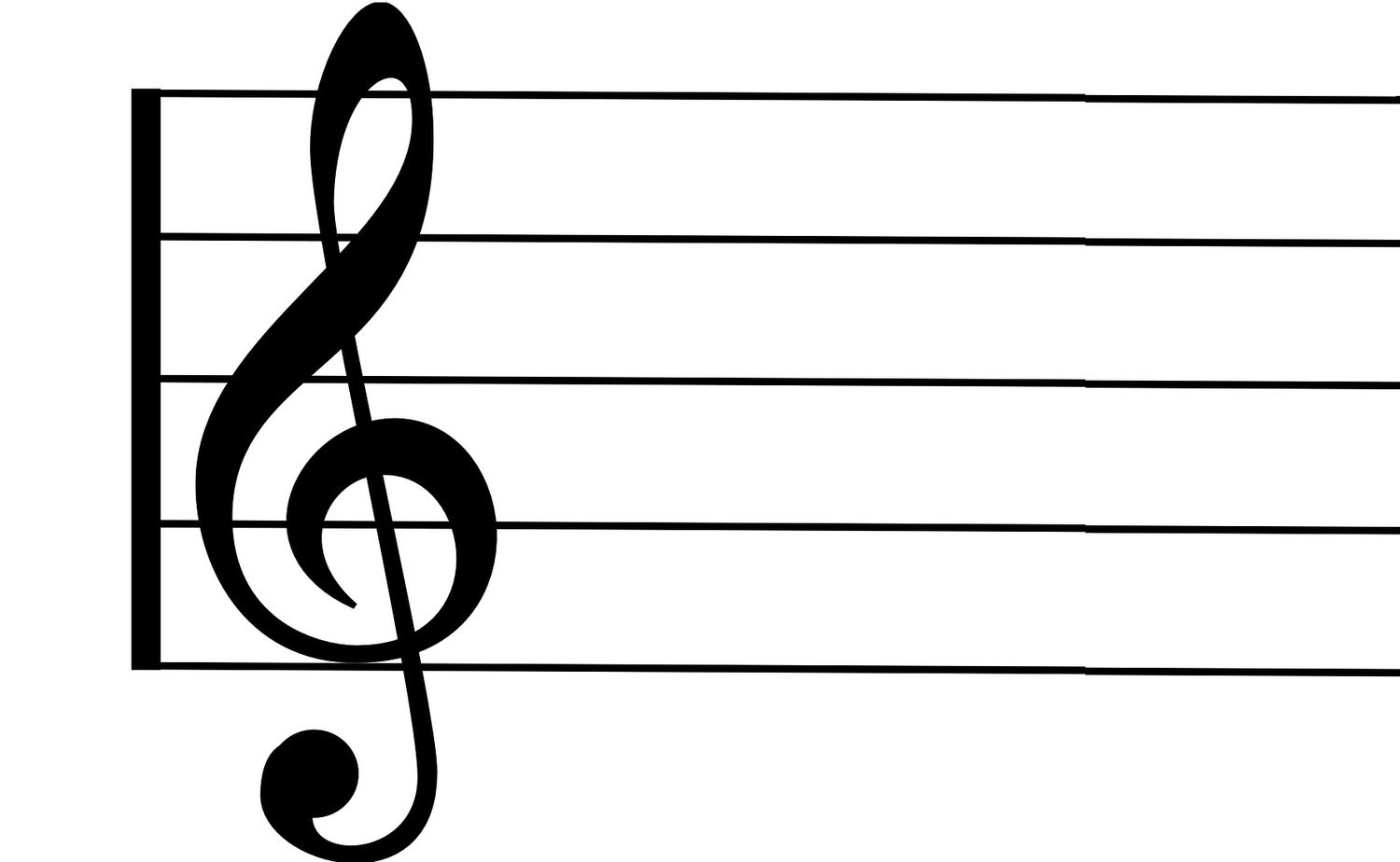Home>Production & Technology>Treble>What Does An Eight On The Bottom Of A Treble Clef Mean


Treble
What Does An Eight On The Bottom Of A Treble Clef Mean
Modified: January 22, 2024
Discover the meaning of an eight on the bottom of a treble clef and its significance in music notation. Gain a deeper understanding of treble clef symbols.
(Many of the links in this article redirect to a specific reviewed product. Your purchase of these products through affiliate links helps to generate commission for AudioLover.com, at no extra cost. Learn more)
Table of Contents
Introduction
Music is a universal language that allows us to express and communicate our emotions. It brings joy, evokes memories, and transports us to different worlds. But before we can create or even read music, we need to understand the symbols and notations that bring it to life. One of the key elements in reading sheet music is the treble clef. It is one of the most common clefs used in Western music notation and is commonly found on scores for instruments like the piano, violin, flute, and saxophone.
The treble clef, also known as the G clef, derives its name from the fact that it wraps around the line denoting the pitch G above middle C. It is easily recognizable by its curly design and is often associated with higher-pitched instruments. The placement of notes on the staff is determined by the treble clef, allowing musicians to accurately play the intended pitch.
While most are familiar with the general appearance of the treble clef, there are variations and additional symbols that can be found in its notations. One of these symbols is the inclusion of an eight on the bottom of the treble clef. This eight symbol has a particular significance and affects how the music is read and played.
In this article, we will delve into the meaning and importance of the eight symbol when it appears on the bottom of a treble clef. We will explore its interpretation, significance, and even provide examples of songs that utilize this unique notation. By the end, you will have a deeper understanding of how this symbol impacts the music and how it affects your musical performance.
Understanding the Treble Clef
The treble clef, with its iconic curving shape, is a fundamental element in music notation. It is essential for instruments that have higher ranges, such as the violin or flute. Understanding the treble clef is crucial for musicians as it provides vital information about the pitch of the notes.
The treble clef consists of five horizontal lines and four spaces. Each line and space represent a different note. Starting from the bottom, the lines of the treble clef represent the notes E, G, B, D, and F. These notes can be remembered using the mnemonic “Every Good Boy Deserves Fudge.” The spaces, from bottom to top, represent the notes F, A, C, and E, forming the mnemonic “FACE.”
When reading sheet music, notes are placed on either the lines or spaces of the treble clef to indicate their pitch. On each line or space, a different note is represented. This allows musicians to accurately play the intended pitches as written by the composer.
By understanding the structure of the treble clef and the placement of notes on the staff, musicians can effectively read and perform music written in this clef. However, there are certain variations and symbols that can appear on the treble clef, such as the inclusion of an eight on the bottom, which can alter how the music is interpreted.
Let’s dive deeper into these clef notations to discover the meaning and significance of the eight symbol on the bottom of a treble clef.
Exploring Clef Notations
Music notation is a complex system that uses symbols to represent pitch, rhythm, and other musical elements. It allows composers to communicate their musical ideas to performers, who can then bring the music to life. Clef notations are an integral part of this system, providing a framework for reading and interpreting music.
While the treble clef is the most widely used clef in Western music notation, there are other clefs that cater to different instrument ranges. Some common examples include the bass clef, which is used for lower-pitched instruments like the double bass or bassoon, and the alto clef, used primarily for violas and other mid-range instruments.
Each clef has its own set of symbols, lines, and spaces that determine the placement of notes on the staff. Clef symbols, such as the treble clef itself, indicate the pitch range of the instrument and provide a reference point for note placement. These symbols make it easier for musicians to identify and play the correct notes.
Additionally, clef notations can be modified with additional symbols or numbers to convey specific instructions to musicians. These modifications can alter the interpretation or performance of the music. One such notation is the inclusion of an eight on the bottom of a treble clef, which we will explore in more detail in the following section.
Understanding the various clef notations and their symbols is crucial for musicians to accurately read and execute the music they are performing. It allows for consistency and clarity in musical communication, ensuring that the composer’s intentions are effectively conveyed.
What is an Eight on the Bottom of a Treble Clef?
When examining a sheet of music, you may come across a treble clef with an additional symbol attached to it: an eight at the bottom. This added eight symbol has a specific meaning and affects how the music is read and played.
The eight symbol on the bottom of a treble clef is called an octave clef. Its purpose is to indicate that the notes written on the staff should be played an octave higher than they are notated. Essentially, it instructs the performer to generate higher pitches compared to the standard placement of the notes.
Why is this notation necessary? One reason is to better accommodate instruments or vocal ranges that have a limited lower range. By indicating that the notes should be played an octave higher, it allows those instruments or voices to comfortably reach and perform the music.
An octave is a musical interval that spans eight notes, hence the name “octave.” It represents a doubling or halving of the frequency of a sound. When notes are played an octave higher, they sound higher in pitch but carry the same musical identity. Therefore, the octave clef on a treble clef acts as a transposition instruction, affecting how the music is interpreted and performed without changing its essence.
It’s important to note that the inclusion of an eight on the bottom of a treble clef is not commonly seen in regular sheet music. It is more often found in specialized notation, such as vocal music or music for certain instruments that may require this transposition. Therefore, encountering this notation indicates a specific musical intention from the composer.
By understanding the significance of the eight symbol on the bottom of a treble clef, musicians can accurately interpret and perform the music as intended. It allows for flexibility in accommodating different instruments or vocal ranges, ensuring that the music can be enjoyed and performed by a wider range of musicians.
Significance of the Eight Symbol
The inclusion of the eight symbol on the bottom of a treble clef carries a significant meaning in music notation. It serves a specific purpose and has a notable impact on how the music is played and perceived.
One of the primary functions of the eight symbol is to indicate an octave transposition. By instructing the performer to play the notes an octave higher than notated, it allows for adjustments in range and accommodates instruments or voices that may have limitations in their lower range.
This symbol is particularly useful in vocal music, where certain voices may struggle with lower pitches. By employing the eight symbol, composers can ensure that the vocalists can comfortably sing the music without straining their voices.
Additionally, the eight symbol on the bottom of a treble clef can also be utilized in instrumental music. For instance, certain instruments, such as the piccolo or flute, produce naturally higher pitches. By employing the eight symbol, composers can take advantage of these instruments’ higher range and create music that fits their capabilities.
Another significant aspect of the eight symbol is its ability to enhance the overall sound and texture of a musical composition. Playing the notes an octave higher can create a brighter, more brilliant sound that adds depth and richness to the piece.
In some cases, the inclusion of the eight symbol on the bottom of a treble clef may indicate a stylistic choice by the composer. It can be used to achieve a particular musical effect or to evoke a specific emotional response from the listeners.
Overall, the eight symbol carries great significance in music notation. It allows for versatility in accommodating different instruments and vocal ranges, enhances the sound and texture of a composition, and provides creative possibilities for composers to explore.
Understanding the significance and implications of the eight symbol enables performers to accurately interpret and bring the music to life, ensuring that the composer’s intentions are effectively conveyed to the audience.
How to Interpret Music with an Eight on the Bottom of a Treble Clef
When encountering a treble clef with an eight on the bottom, it is important for musicians to understand how to interpret and play the music accurately. Here are some guidelines to follow:
- Transpose Up an Octave: The first and most crucial step is to recognize that the notes written on the staff should be transposed up an octave. This means that the notes should be played or sung one octave higher than they are notated. Be mindful of this transposition and adjust your playing accordingly.
- Mind the Key Signature: Pay attention to the key signature of the piece. The inclusion of the eight symbol does not affect the key of the music. It only instructs the performer to play the notes one octave higher. Therefore, the key signature remains the same, and all accidentals, sharps or flats, should be observed accordingly.
- Be Aware of the Music’s Context: Consider the broader context of the music to determine the purpose of the octave transposition. Is it to accommodate instruments with limited lower range? Or is it a stylistic choice to create a specific musical effect? Understanding the context can help shape your interpretation of the piece and bring out its intended nuances.
- Maintain Musical Integrity: While playing the notes an octave higher, it is essential to maintain the musical integrity of the composition. Pay attention to dynamics, phrasing, and articulation markings as they are written. Playing the notes higher does not mean neglecting other musical elements. Focus on conveying the mood and expression that the composer intended.
- Practice the Octave Transposition: If you are not accustomed to playing or singing an octave higher, it may require some practice to become comfortable with the transposition. Take time to work on the technical aspects of playing or singing in this new range. Gradually increase your familiarity and confidence in performing at the higher pitch.
By following these guidelines, musicians can effectively interpret and perform music with an eight on the bottom of a treble clef. It allows for a seamless adaptation to the octave transposition while staying true to the essence of the music.
Examples of Songs Utilizing the Eight Symbol
While encountering the eight symbol on the bottom of a treble clef is relatively uncommon in mainstream sheet music, there are certain musical compositions that make use of this notation to achieve specific artistic or technical objectives. Let’s explore a few examples:
- “The Queen of the Night’s Aria” from Mozart’s “The Magic Flute”: This iconic soprano aria features an eight symbol on the bottom of the treble clef. It allows the soprano to reach the high F6 note, which is considered one of the highest and most demanding soprano notes in classical repertoire.
- “Sotto voce” by Carl Orff: In this contemporary vocal composition, Orff utilizes an eight on the bottom of the treble clef to transpose the music up an octave. This choice adds a unique ethereal quality to the piece, creating a haunting and atmospheric atmosphere.
- “Flute Concerto in D Major” by Carl Stamitz: This flute concerto features passages with the eight symbol, allowing the flutist to showcase their virtuosic abilities in the higher register of the instrument. The inclusion of the octave transposition adds brilliance and agility to the composition.
- “The Barcarolle” from Offenbach’s “The Tales of Hoffmann”: In this duet for soprano and mezzo-soprano, the eight symbol appears on the bottom of the treble clef for the mezzo-soprano part. This enables the mezzo-soprano to sing in a higher range, creating a delicate and enchanting blend with the soprano.
These examples highlight the diverse applications of the eight symbol on the bottom of a treble clef. From showcasing technical prowess to creating unique sonic textures, this notation provides composers with a tool to shape and enhance their musical compositions.
While these examples represent specific compositions, it is essential to remember that encountering the eight symbol on the bottom of a treble clef is rare in everyday sheet music. However, when it does appear, it signifies a specific musical intention that adds depth and character to the performance.
Conclusion
The inclusion of an eight on the bottom of a treble clef carries significant meaning in music notation. It serves as an octave clef, indicating that the notes should be played one octave higher than written. This notation is typically used to accommodate instruments or voices with limited lower range, or as a stylistic choice to enhance the sound and texture of a composition. By understanding how to interpret and perform music with an eight symbol, musicians can accurately convey the composer’s intentions and create a seamless musical experience.
The treble clef, with its distinctive shape, is integral to understanding and reading sheet music. It provides a framework for identifying and playing notes in the higher register. Exploring different clef notations reveals the variety and flexibility within music notation systems.
While encountering the eight symbol on the bottom of a treble clef may be relatively rare in mainstream sheet music, it can be found in specialized notation for specific instruments or vocal ranges. Examples such as Mozart’s “The Queen of the Night’s Aria” and Orff’s “Sotto voce” demonstrate how this notation can shape and elevate musical compositions.
As musicians, it is essential to approach music with an open mind and a willingness to adapt to different notations and interpretations. By staying attentive to the eight symbol, understanding its significance, and striving to maintain the integrity of the composition, we can effectively bring the music to life.
In conclusion, the eight symbol on the bottom of a treble clef adds a layer of musical expression and technical adaptability to sheet music. It opens up possibilities for musicians to explore different ranges, textures, and emotions. Embracing these nuances enhances our understanding, interpretation, and appreciation of the beautiful language of music.











